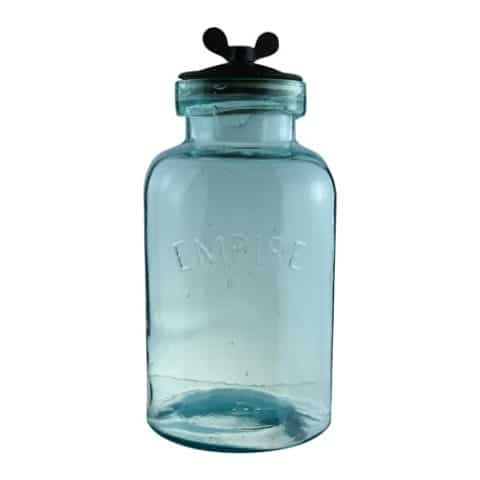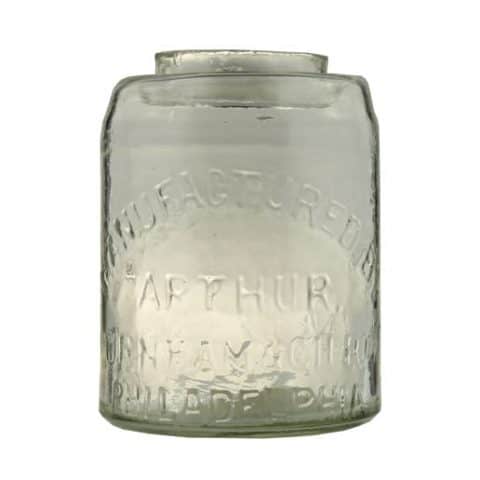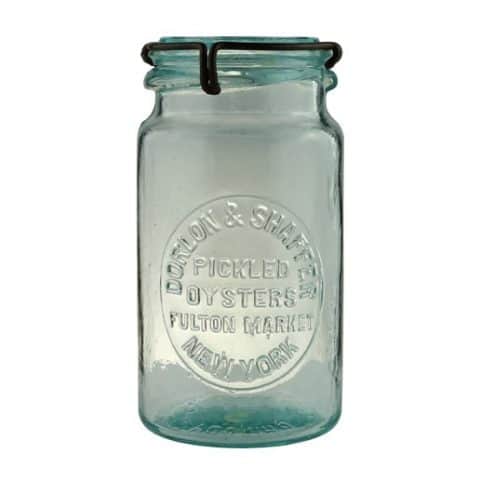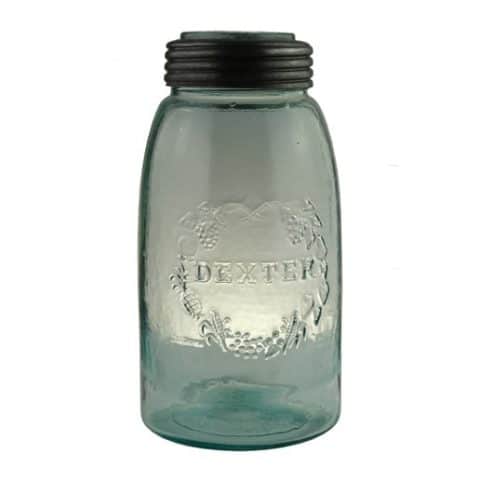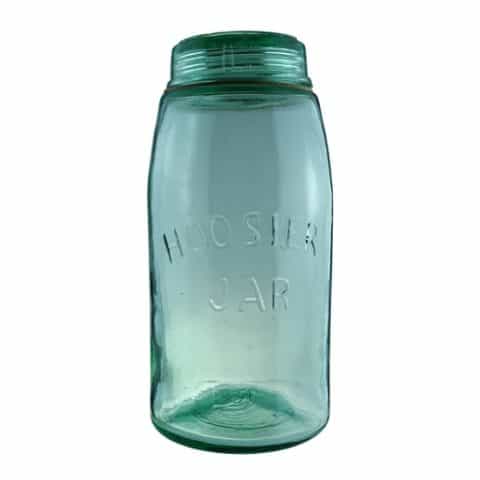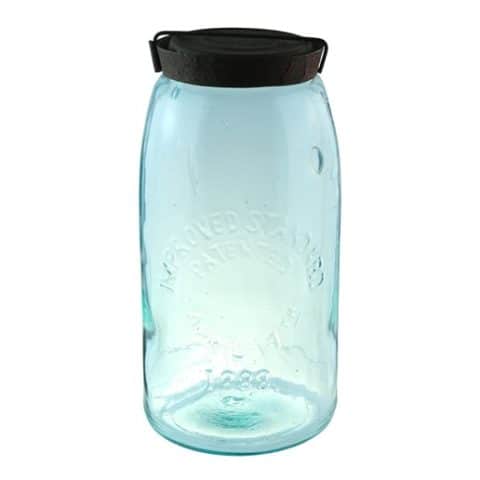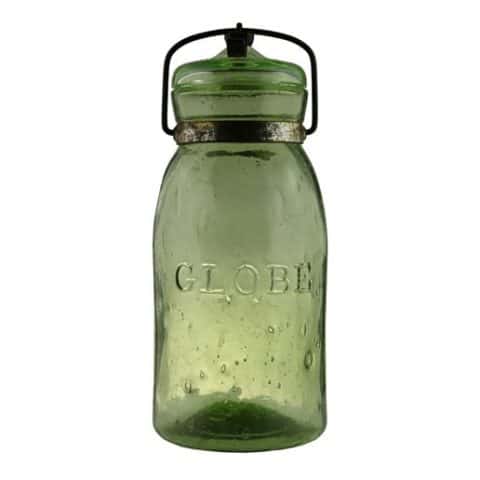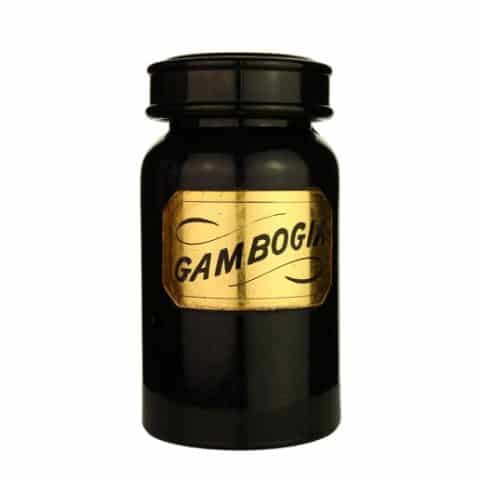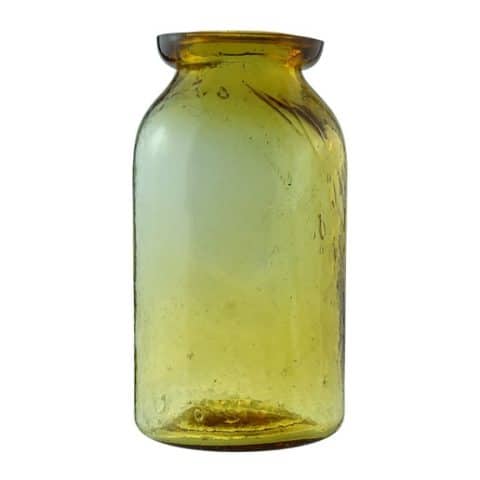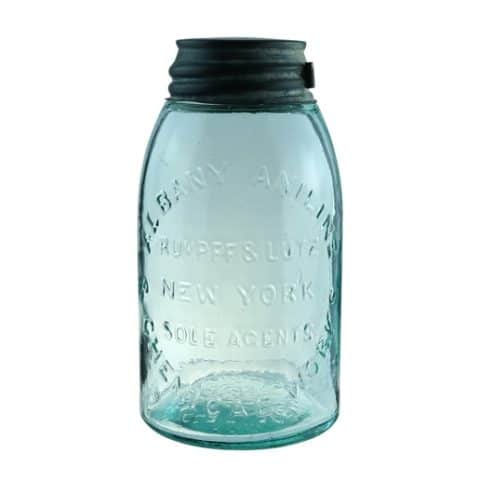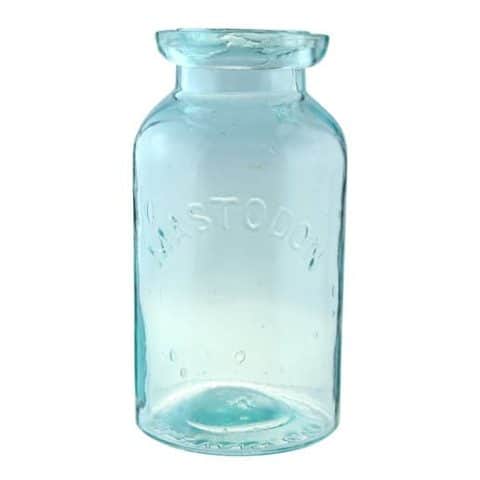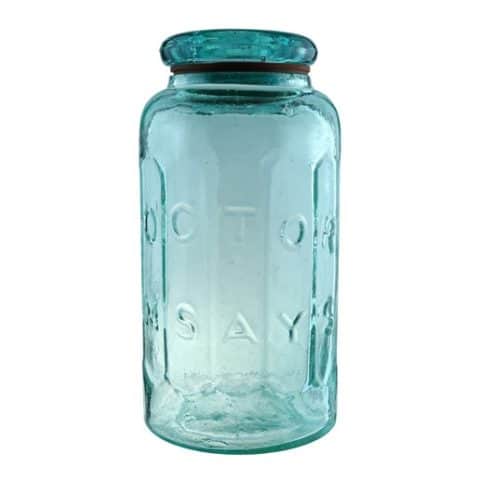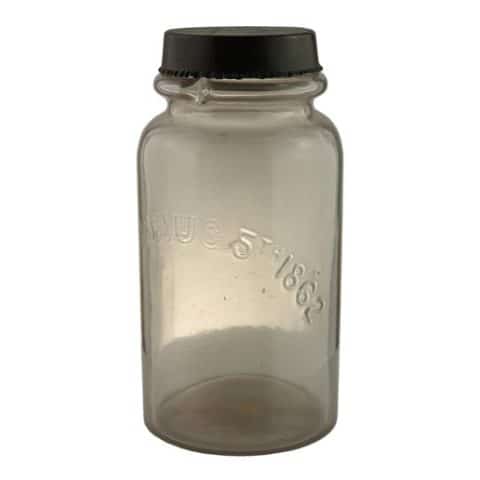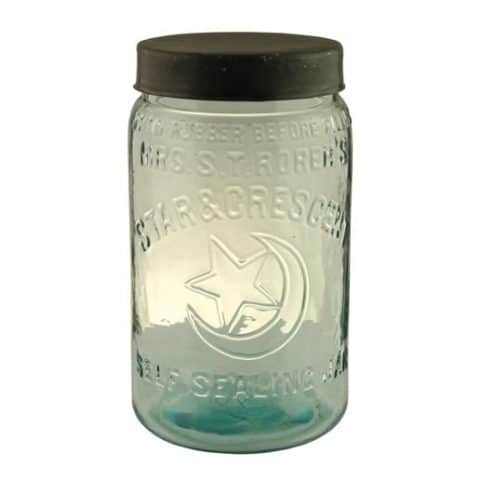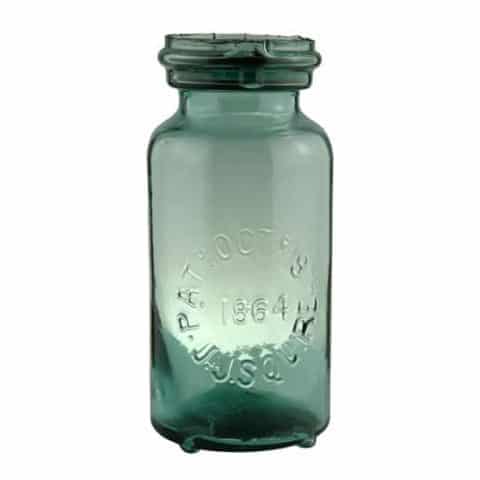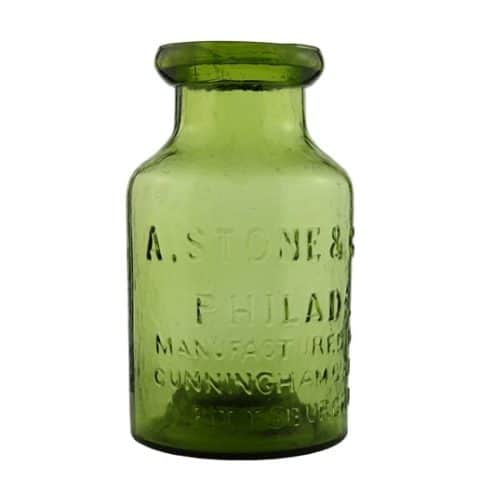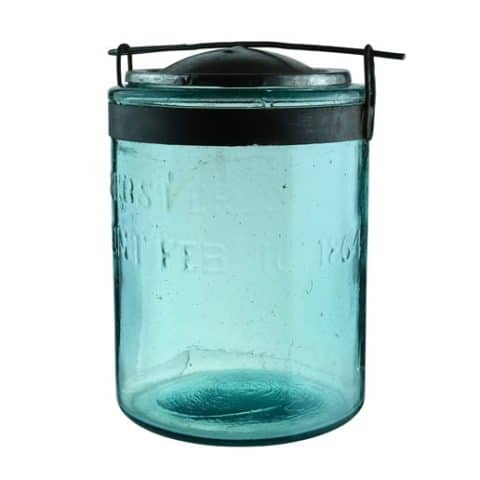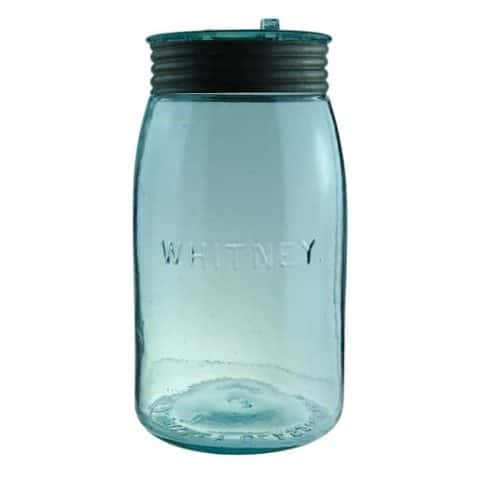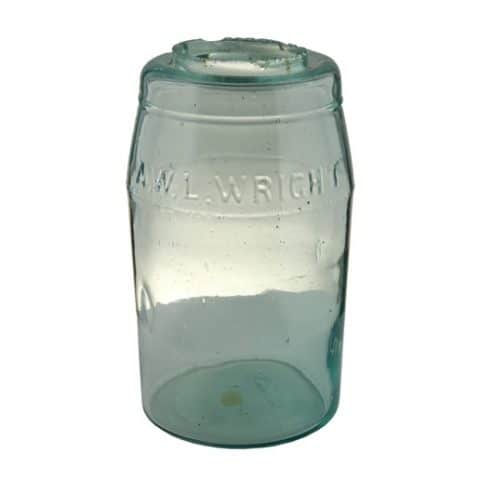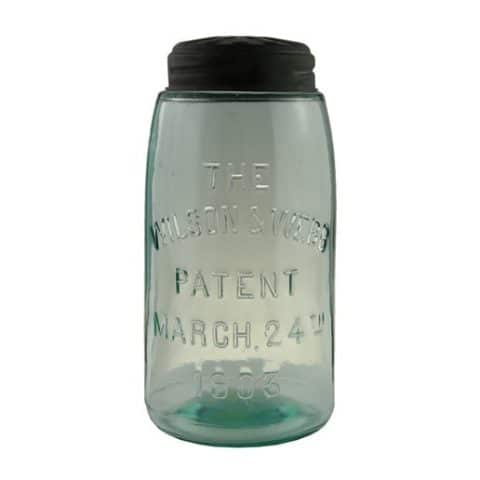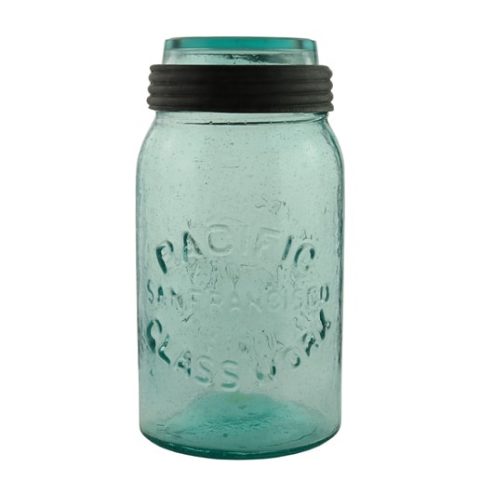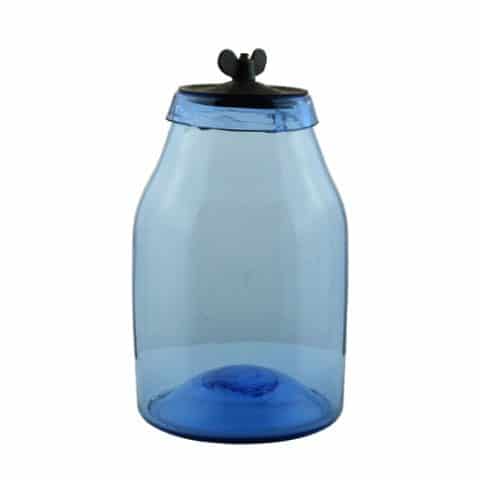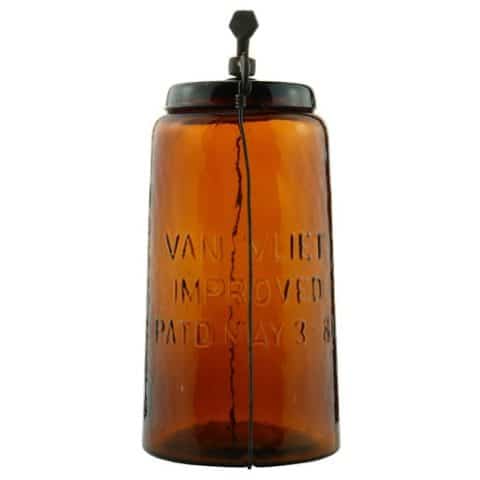Victory Jar – Pacific Glass Works
Victory
1
Patd Feby 9th 1864
REISD June 22d 1867
Pacific Glass work
San Francisco
Pacific Glass Works, San Francisco, California
Aquamarine Quart
Provenance: Jerry McCann Collection

Our museum presents the “Victory” Fruit Jar, an important glass container made in San Francisco, California at the Pacific Glass Works in the late 1860s and 1870s. The jar was patented on February 9th, 1864 with a reissued patent on June 22nd, 1867. This information is actually embossed on the jar. The Victory jar can be found in various mold variations as you can see in the illustration below.

Our quart museum example, in rich aquamarine glass, is embossed ‘VICTORY 1’ in two horizontal straight lines with the patent dates ‘PATD FEBY 9TH’ and ‘REISD JUNE 22D 1867’ in a circle around “Victory 1.” The top patent date is convex while the second date is concave creating the typography circle. The “D” in “Patd” is smaller, raised, and underlined. This also applies to “TH” in “9th,” the “D” in “Reisd” and the “D” in “22d.”
On the opposite side, ‘PACIFIC GLASS WORK’ (no “S”) is embossed in a similar circular typographic manner. ‘PACIFIC’ is in a convex arch over ‘GLASS WORK’ which is a concave arch creating the circle. ‘SAN FRANCISCO’ is centered and embossed horizontally in the circle and in smaller letters. This is the rarer version of the jar with “San Francisco” spelled out. Later jars had the abbreviation, “S. F.”

The jar is hand-blown and has a ground lip for a glass cap and zinc screw band. This ground top, externally screw-threaded jar is similar to the famous Mason’s patent jars that utilized a zinc band to hold down the slightly cupped glass lid. The condition of the jar is excellent and has outstanding glass character. The jar is usually found in shades of blue and green aquamarine. One example in an amber glass color, with a copper puce tone, exists and is represented in the museum.
The jar patentee was Elbridge Harris of Boston, Massachusetts on February 9, 1864, and again on January 22, 1867. Both of the patents were assigned to W. W. Lyman of West Meridian, Connecticut. See the museum example of the PAT’D AUG. 5TH 1862 jar attributed to William W. Lyman. It is thought that the Victory jar molds were shipped west to San Francisco where Pacific Glass Works added their name on the molds and manufactured the jars.

Pacific Glass Works was incorporated on October 2, 1862, with a capital of $50,000. The works began production the following year with a single furnace and two pots, estimating a production capacity of 400 dozen bottles per day. Like many pioneering operations, Pacific Glass Works had many challenges, including access to materials and management turnover.
By April 1872, the Pacific Glass Works had to substantially increase their production costs due to advances in the cost of Soda Ash as an article in the Sacramento Daily Union reported. The article went on to say that the manufacture of fruit jars had increased due to new products and advances in jar making compared to previous years at the factory. The packing of butter in their big seller Victory Fruit Jars, for use in warm climates, was a success with the covers being made of glass and no metal for the butter to come in contact with. They also had just received a contract for jars to pack 40,000 pounds of butter from the United States Subsistence Department and were also proving multiple lots of 250 Carboys of acid produced by a chemical partner on steamers headed to Japan. At this time, John Taylor & Co. were the agents for Pacific Glass Works. 1872 took them to full production where they were also producing Demijohns, Pickle, Mustard, and Wine Bottles along with Mason porcelain lined Patent 1858 jars, the Gem jar, and the Grove Ring jar.

In 1876, Carlton Newman purchased the firm and renamed his combined business the San Francisco and Pacific Glass Works. At that time, they were manufacturing all kinds of green and black glassware and all kinds of plain and lettered bottles. It is doubtful that the Victory jars were produced after this date.
We know the Carlton Newman name because we have his Newman’s Patent 1859 jar on an adjacent museum shelf. When Carlton was 30 years old and residing in Birmingham, Pennsylvania, he received two patents for his revolutionary jar. Like many before him, he would head west looking for gold and opportunity.
Primary Image: The Victory Fruit Jar imaged on location by Alan DeMaison, FOHBC Virtual Museum Midwest Studio
Support: Reference to Pacific Glass Works by Bill Lockhart, Beau Schriever, Bill Lindsey, and Carol Serr
Support: Reference to Fruit Jar Annual 2020 – The Guide to Collecting Fruit Jars by Jerome J. McCann
Support: Reference to Red Book #11, the Collector’s Guide to Old Fruit Jars by Douglas M. Leybourne, Jr. Illustration of various Victory jars made by the Pacific Glass Works in San Francisco by Alice Creswick courtesy Doug Leybourne.
Support Image: Sole example of the amber jar from the Darryl Plank collection. Described as having a copper puce tone.
Support Image: Two Victory fruit jars side by side courtesy of Jeff Wichmann, American Bottle Auctions.
Join the FOHBC: The Virtual Museum is a project of the Federation of Historical Bottle Collectors (FOHBC). To become a member.
















